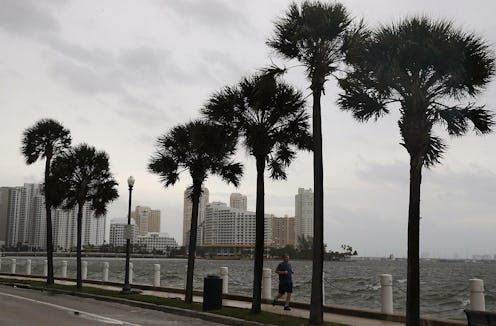News
St. Augustine Will Have A Curfew In Place When Hurricane Irma Hits

As signs of the deadly Category 4 Hurricane Irma began hitting Florida’s southernmost point Saturday morning, officials are working to predict where the storm may go next. As it is currently projected to move, Irma will likely unleash hurricane conditions on the Florida Keys, through southern and central Florida by Saturday night with wind speeds of an estimated 130 mph. Hurricane Irma is expected to hit St. Augustine around Sunday night, and is already causing three to five inches of rain in the area as storm surges hit the northeastern Florida beach on Saturday morning. As of Saturday at 6:00 a.m., St. Augustine was under mandatory evacuation.
The eye of the storm remained in Cuba as of 8 a.m. ET Saturday, and authorities are predicting the storm with regain strength as it reaches Florida in the coming hours.
St. Augustine law enforcement announced a curfew for county residents, beginning Sunday night when hurricane effects are predicted to be at their worst in the area. The curfew will continue to be in effect nightly. St. Augustine and St. Johns County are now under hurricane watch. Irma is predicted to move northwest within the next 24 hours, but significant effects are predicted to extend to Florida’s east coast, which remains under a flood watch.
When the storm reaches St. Augustine, wind speeds will have reduced to an estimated 40-70 mph. Heavy rain will continue through the weekend, peaking Sunday night and Monday morning with 5 to 10 inches of rain. Tornadoes are likely.
Officials encouraging evacuation warn there may be little to no power in the area. Utilities may be unusable for days.
St. Augustine and the northeast region is still recovering from a previous hurricane. In 2016, Hurricane Matthew devastated the area when its path turned from the southern tip of Florida, missing Miami and instead hitting the eastern coast. Officials say these areas that were impacted last year are more vulnerable to severe damage this year from Hurricane Irma.
In preparation for the storm, 5.6 million people have been ordered to evacuate their homes in Florida. At least five shelters were opened in the St. Augustine area Saturday morning, including shelters able to accept those with special needs or pets. Officials say more shelters can be opened as needed. Roads have been redirected to allow for more routes north, and reports say traffic going north continues to move at a steady pace.
In a news conference Saturday morning, Florida Gov. Rick Scott warned: “Evacuate. Not tonight, not in an hour. You need to go right now.”
Officials also warned of the storm surges in Florida, which could reach up to 12 feet in some areas. Though the hurricane has now been downgraded to a Category 4 storm, predictions estimate Irma will regain speed and size before its center hits Florida. The National Hurricane Center described “life-threatening surge and wind” as the eye of the storm reaches southwest Florida and the Tampa area.
The exact path of Irma is still unknown, as its center has yet to reach land in Florida. The longterm route and effects of the storm cannot be predicted precisely, though it is estimated to hit Alabama and move through Georgia as it moves up the coast. Authorities declared states of emergency in Alabama, North Carolina and South Carolina.
On its way to the Florida Keys and Miami area, numerous death have already been reported. The hurricane hit Cuba directly Friday night, and at least 20 people are dead in its wake. Islands in the Caribbean have been devastated by the winds and rain. 90 percent of the island of Barbuda is reportedly destroyed.